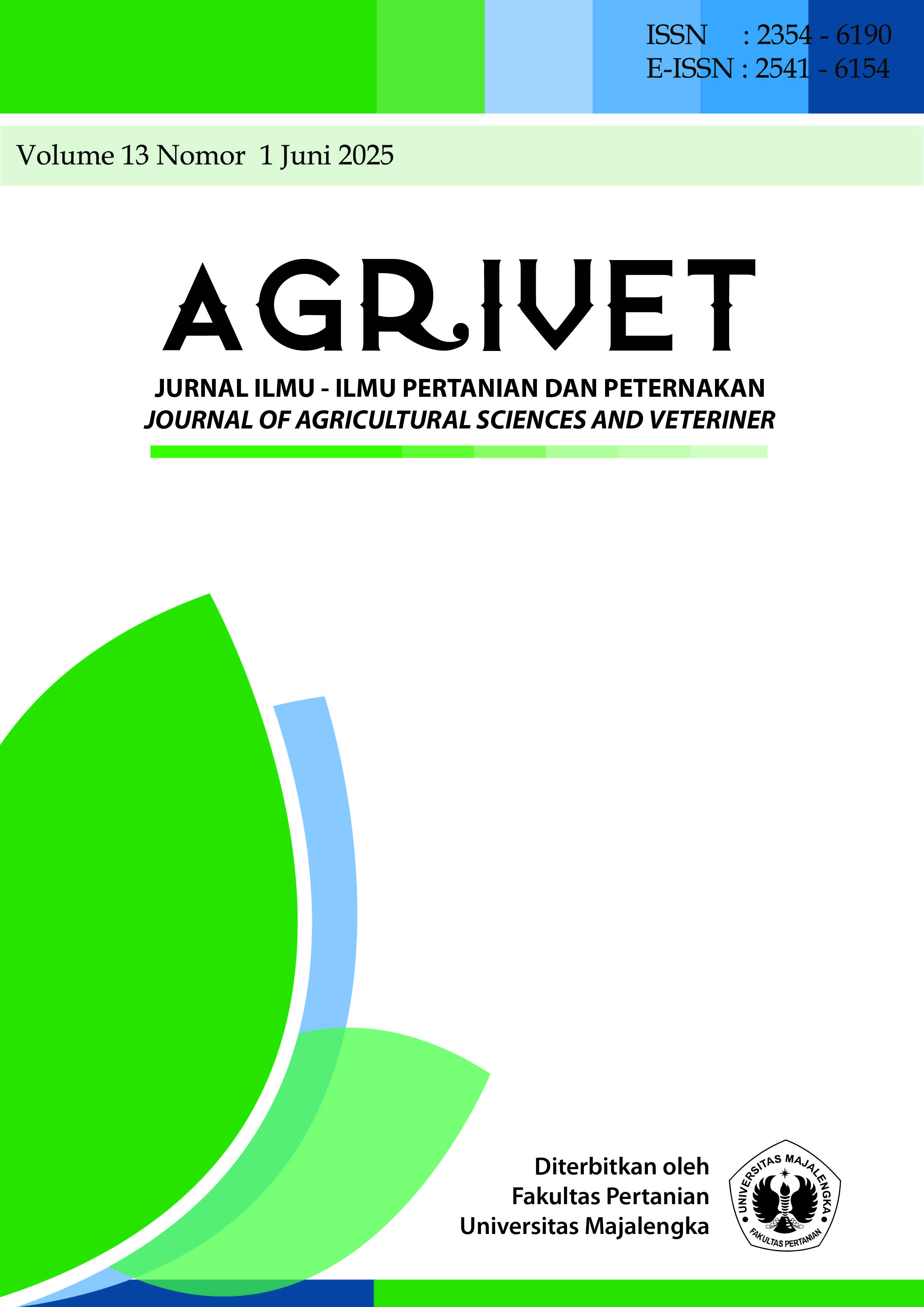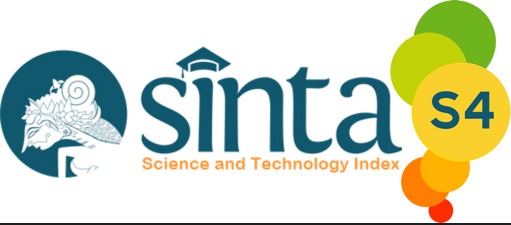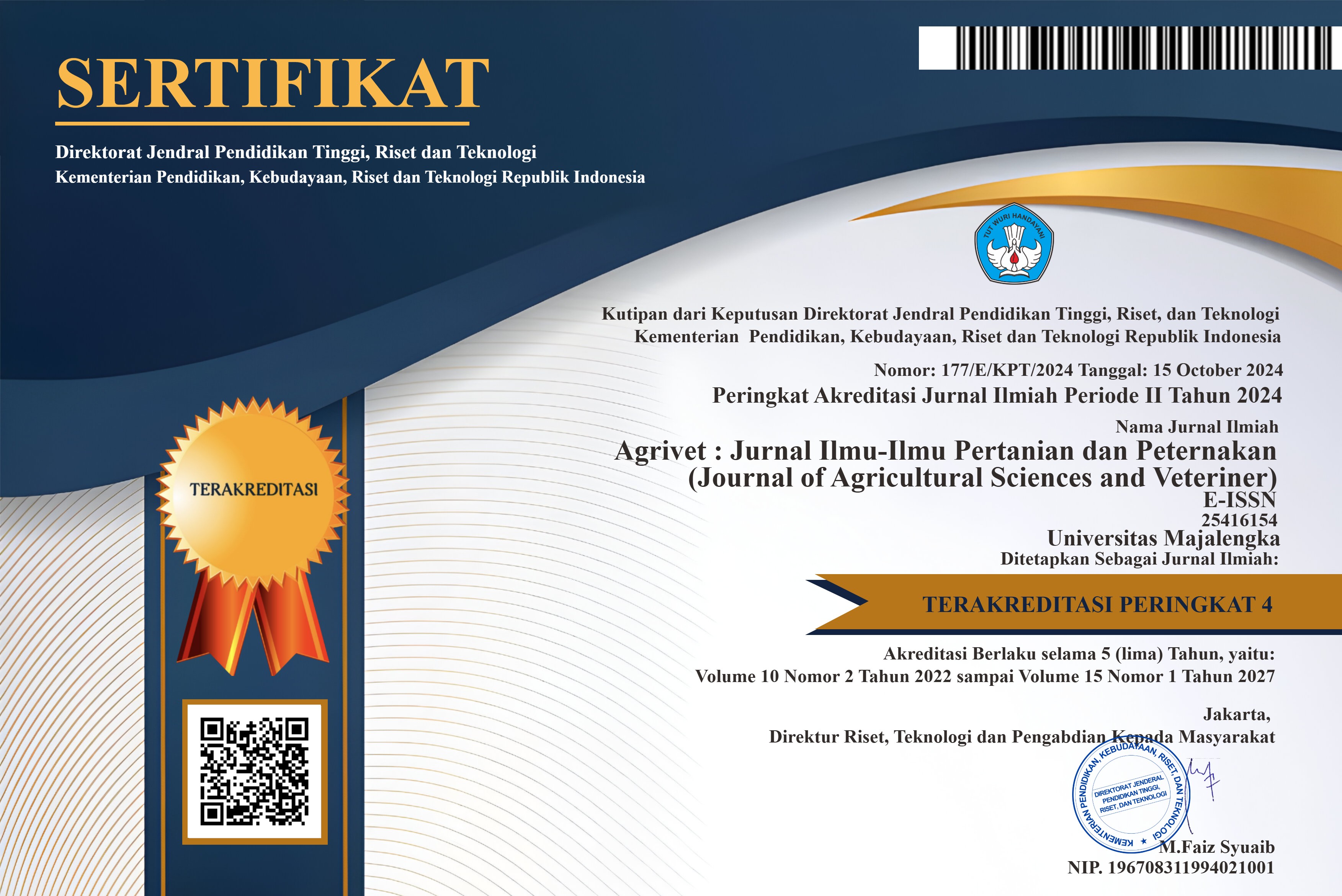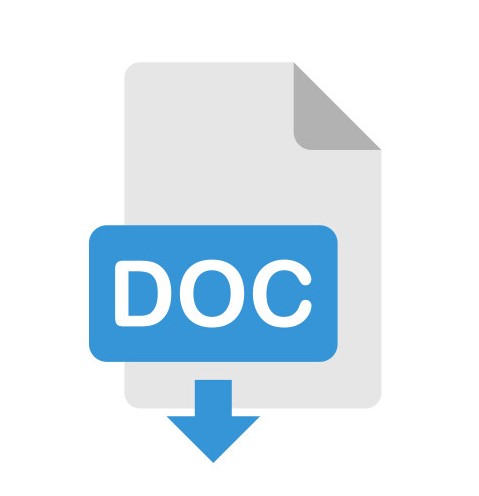Peramalan jumlah produksi kelapa sawit di Provinsi Riau Periode Tahun 2023 - 2025
DOI:
https://doi.org/10.31949/agrivet.v13i1.12242Abstract
Oil palm is one of the plantation crops that has an important role in the agricultural sector. The increasing demand for palm oil derivative products has resulted in an increase in demand for palm oil commodities. Riau Province is one of the palm oil producing provinces in Indonesia. The aim of this research is to forecast the amount of palm oil production in 2023-2025. The research method used is quantitative. The data used is secondary data in the form of data on the amount of palm oil production in Riau Province for 2018-2022. The research results show that: 1) Model (1,1,0) is the best model because it has the smallest RMSE, MAD and MAPE values; 2) The results of forecasting the amount of palm oil production in Riau Province for 2023-2025 tend to increase in each period.
Keywords:
Oil Palm, Production, Forecasting, Riau ProvinceDownloads
References
Badan Pusat Statistik. (2024, Mei 2). Luas Tanaman Perkebunan Menurut Provinsi (Ribu Hektar), 2023. Retrieved from bps.go.id: https://www.bps.go.id/id/statistics-table/2/MTMxIzI=/luas-tanaman-perkebunan-menurut-provinsi--ribu-hektar-.html
Badan Pusat Statistik. (2024, Mei 2). Produksi Tanaman Perkebunan (Ribu Ton), 2023. Retrieved from bps.go.id: https://www.bps.go.id/id/statistics-table/2/MTMyIzI=/produksi-tanaman-perkebunan--ribu-ton-.html
Bangun, R. H. B. (2016). Penerapan Autoregressive Integrated Moving Average (ARIMA) Pada Peramalan Produksi Kedelai di Sumatera Utara. Jurnal Agrica, 9(2), 90-100.
Chikwe et al., 2020: Hubungan antara strategi manajemen rantai pasokan dengan efektivitas peramalan dalam konteks industri modern.
Direktorat Statistik Tanaman Pangan, Hortikultura, dan Perkebunan. (2021). Statistik Kelapa Sawit Indonesia 2020. Jakarta: Badan Pusat Statistik.
Direktorat Statistik Tanaman Pangan, Hortikultura, dan Perkebunan. (2023). Statistik Kelapa Sawit Indonesia 2022 . Jakarta: Badan Pusat Statistik.
Ekananda, M. 2016. Analisis Ekonometrika Time Series. Edisi Kedua. Jakarta: Mitra Wacana Media.
Firdaus, M. 2018. Aplikasi Ekonometrika untuk Data Panel dan Time Series. Bogor: IPB Press.
Izafera, A. H., Salam, N., & Susanti, D. S. (2023). Peramalan Produksi Kelapa Sawit dan Karet di Provinsi Kalimantan Selatan. Jurnal Agro Industri Perkebunan, 71-80.
Junaidi, B. J. 2011. Ekonometrika Deret Waktu Teori dan Aplikasi. PT Penerbit IPB Press.
Mankiw, N.G. (2020). Principles of Economics. Cengage Learning.
Palm Oil Agribusiness Strategic Policy Institute. 2024. Mengenal Pohon Kelapa Sawit dan Karakteristiknya (2024).
Putri, S. M., & Arliani, E. (2022). Peramalan produksi padi di Kabupaten Sleman menggunakan model arima. Jurnal Kajian dan Terapan Matematika, 8(3), 188-198.
Rachim, F., Sudirman, S., Ritnawati, R., Erdawaty, E., & Fitriah, F. (2023). Using the Arima Method with Minitab Applications for Forecasting Work Order Projects of Casting Construction (Case Study: PT. Bumi Sarana Beton). Civilla: Jurnal Teknik Sipil Universitas Islam Lamongan, 8(2), 121-136.
Rosmegawati. (2021). Peran Aspek Tehnologi Pertanian Kelapa Sawit Untuk Meningkatkan Produktivitas Produksi Kelapa Sawit. J. AGRISIA, 13(2).
Samuelson, P.A., & Nordhaus, W.D. (2019). Economics. McGraw-Hill Education.
Sorlury, F. N., Mongi, C. E., & Nainggolan, N. (2022). Penggunaan Model Autoregressive Integrated Moving Average (ARIMA) Untuk Meramalkan Nilai Tukar Petani (NTP) di Provinsi Sulawesi Utara. d'CARTESIAN: Jurnal Matematika dan Aplikasi, 11(1), 59-66.
Subdirektorat Statistik Tanaman Perkebunan. (2019). Statistik Kelapa Sawit Indonesia 2018. Jakarta: Badan Pusat Statistik
Todaro, M.P., & Smith, S.C. (2020). Economic Development. Pearson.
Yuliyanti, R., & Arliani, E. (2022). Peramalan jumlah penduduk menggunakan model arima. Jurnal Kajian dan Terapan Matematika, 8(2), 114-128.
Published
How to Cite
Issue
Section
License
Copyright (c) 2025 RA. Diana Maulidah, Zevira Saffa Komara, Dewi Rohma Wati

This work is licensed under a Creative Commons Attribution-ShareAlike 4.0 International License.
An author who publishes in the Jurnal Agrivet agrees to the following terms:
- Author retains the copyright and grants the journal the right of first publication of the work simultaneously licensed under the Creative Commons Attribution-ShareAlike 4.0 License that allows others to share the work with an acknowledgment of the work's authorship and initial publication in this journal
- The author is able to enter into separate, additional contractual arrangements for the non-exclusive distribution of the journal's published version of the work (e.g., post it to an institutional repository or publish it in a book) with the acknowledgment of its initial publication in this journal.
- The author is permitted and encouraged to post his/her work online (e.g., in institutional repositories or on their website) prior to and during the submission process, as it can lead to productive exchanges, as well as earlier and greater citation of the published work












